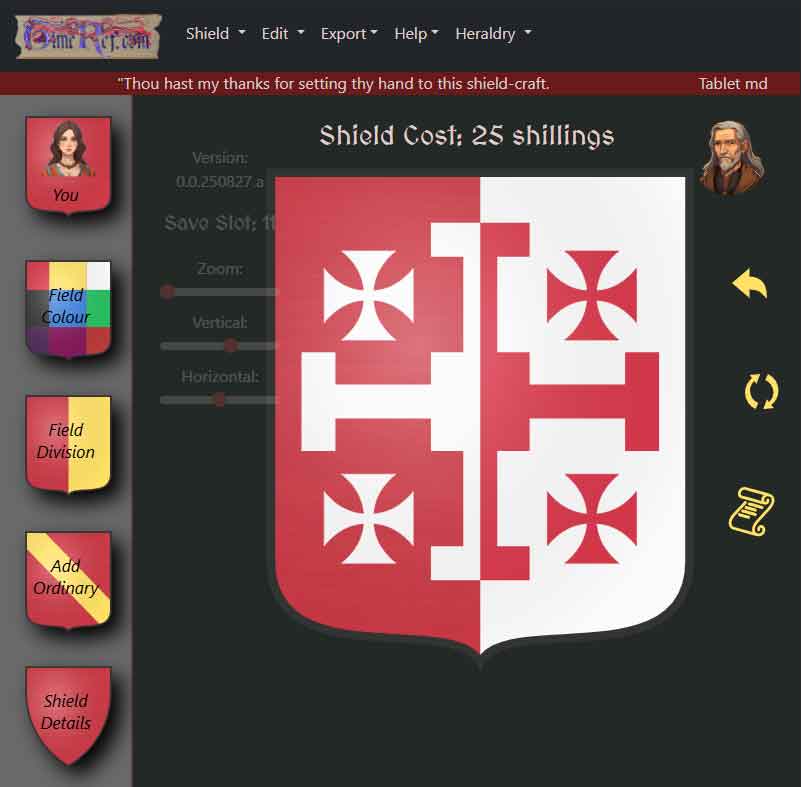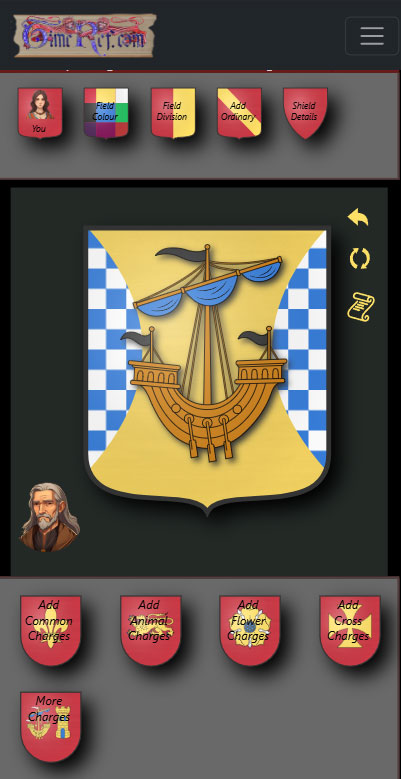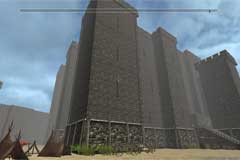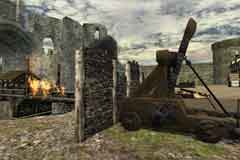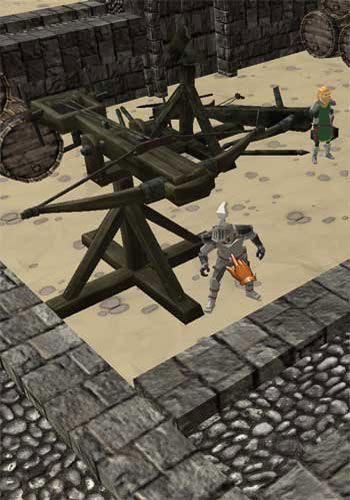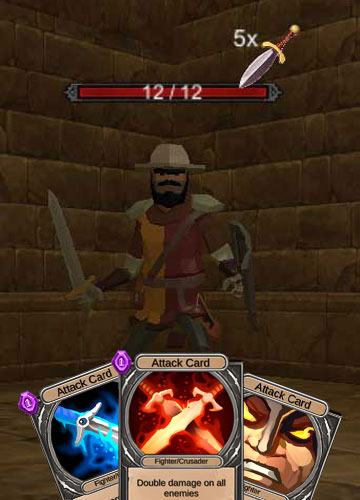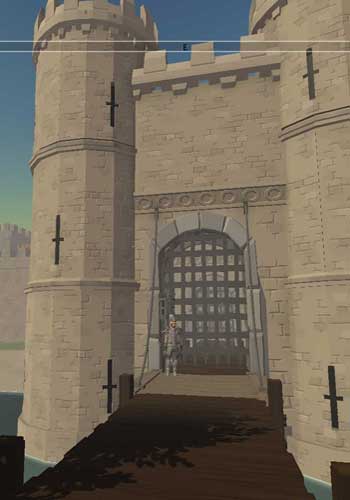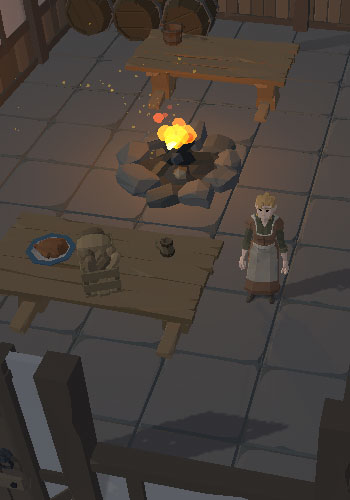| Born | circa 1208 | Born At | |
| Died | 4 August 1265 | Buried At |
| Born | circa 1208 / |
| Died | 4 August 1265 / |
Related Episodes
The Second Barons' War (click here)
Event Location Map (click image to explore)
Family Tree Details
+Eleanor (Daughter of King John) (b.1215 - d.1275)
= Montfort, Henry de ( - d.1265)
Montfort, Simon de (b.1208? - d.1265)
+Eleanor (Daughter of King John) (b.1215 - d.1275)
= Montfort, Henry de ( - d.1265)
See Also
People
Places
Timeline
King Henry III ordered the sheriffs of Hampshire, Dorset and Wiltshire to give Simon de Montfort the possession of the lands of his father, the Earl of Leicester. [1]
King Henry III married Eleanor, one of four daughters of Raymond count of Provence. Eleanor was 14 years old. Simon de Montfort, as Lord High Steward, took care of the banquet and kitchen arrangements. The ceremony took place at Canterbury Cathedral. [1]
Simon de Montfort married King Henry III's sister, Eleanor secretly. She had been married to William, Earl of Pembroke (son of William Marshal?), but he died at a young age and left her with his wealth. The Barons were not happy with this arrangement as they were not consulted. [1]
Edward was the first son born to King Henry III and Eleanor of Provence and was born at the Palace of Westminster. Simon de Montfort was chosen as his godfather by Henry III. [1]
Simon de Montfort is one a twelve man council who met to work out Henry's finances. Henry was criticised for his excesses. [1]
Isabella, Henry's mother persuaded Henry to mount an expedition to retake Poitou. Unable to get money directly from the barons, Henry resorted to extort money from them individually instead (how?). The expedition failed, and after being rescued the Earls of Leicester, Salisbury and Norfolk, Henry retreated to Bordeaux where they spent the winter. [1]
King Henry III bestowed the custody of Kenilworth Castle to Simon de Montfort. Simon's wife Eleanor, Henry's sister, already owned Odiham Castle so Simon had two of the strongest fortresses in England under his control. [1]
The seven were joined by many more Barons and Knights and they confronted King Henry III at Westminster. Although armed, the Barons did leave their weapons outside the hall. Henry and his son Edward were forced to take the oath to join the commune of Barons and to accept their wished. Henry agreed to meet again with the Barons at Oxford in June. [2]
For many years, Henry had been living beyond the means of the country and with the failure of both harvests and Henry's will to amend his ways, a group of Barons rose up against him. Seven Barons first signed an oath and formed a commune in which they swore to look after each others interests. The seven were Richard de Clare (Earl of Gloucester), John Fitz Geoffrey, Roger Bigod (Earl of Norfolk), Hugh Bigod (Roger's brother), Peter of Savoy, Peter de Montfort (not a relation of Simon), and finally Simon de Montfort. [2]
Provisions of Oxford. The barons and King Henry III met at Oxford where fully armed, the barons showed Henry that he had no choice but to reform the way the country was being run. A council of fifteen members was set to advise the king. The fifteen were selected by a committee of four, two from the barons and two from the king. The new council was not to last long as the members could not agree amongst themselves on courses of action and by 1260 it had broken up. The reformers and royalists were to take up arms and meet in civil war. [1]
As an act of faith, Simon de Montfort handed over his castles at Odiham and Kenilworth as part of the proposals put forward in the Provisions of Oxford.
At this time, Edward (to become King Edward I), met up with Simon de Montfort and came under his influence. Edward, knights Simon's two eldest sons. This friendship was not to last.
Robert Ferrers, the earl of Derby, along with Simon de Montfort's son laid siege to the city of Worcester. The attackers finally entered the city and were allowed to sack the city. The Jewish community was targeted by the attackers.
Moving firstly westward from the stronghold of one of Henry's supporters to another, Simon de Montfort's forces did much damage, even though Simon had ordered that no sacred place should be attacked. Simon then moved towards the south east coast ports to secure them. By the end of June he had reached Dover, its inhabitants welcoming him. [1]
Following the defeat at the Battle of Lewes, King Henry III's supporters fled and took refuge in Pevensey Castle. Simon de Montfort's son, laid siege to the castle, but could not take it.
At a camp near Canterbury, called Barham Down, the supporters of Simon de Montfort gather an army and hold it there to fend off a possible invasion from King Henry III's supporters.
A force led by Simon de Montfort besieged Rochester Castle for several days but the castle did not fall. He left a small number of men to continue the siege but they were attacked and fled. [3]
During this year forces belonging to Simon de Montfort occupied and controlled the important Beeston Castle. [4]
The civil war between King Henry III and the barons. The barons wanted to limit Henry's power and to sort out his finances which were a drain on the barons' resources. The cause was led by Simon de Montfort.
Simon de Montfort surprised King Henry III and Prince Edward, with early movements of his troops on the hills above the castle at Lewes. Henry and Richard of Cornwall defend the centre and left of the castle, but Prince Edward attacked the lighter armed Londoners to the right and forced them to flee and followed them off the battle site. When he returned, he found that King Henry was trapped in the priory and gave himself up in exchange for his father's release. After the battle Simon de Montfort marched on London but the drawbridge on London Bridge had been raised by the Lord Mayor. Simon had the support of the Londoners who managed to lower the drawbridge allowing him into the city, [5]
From a provisional administration consisting of Simon de Montfort himself, the Earl of Gloucester and the Bishop of Chichester, a council of 9 were chosen to advise the king. From these 9, 3 were to be with the king at all times. [1]
Simon calls a Parliament where for the first time ordinary people were brought to represent the country. [1]
The Earl of Gloucester, Gilbert de Clare organised a tournament where Simon's sons were invited to attend. Angry that de Clare could put his sons in a position of danger where a murderer could take advantage, he stopped the games. Simon and Gilbert fall out and Gilbert moves his allegiance to the king causing a split in the Barons loyalties. [1]
Simon's son was sent to London to raise money and troops. He diverted back through Winchester which was loyal to the king and then moved through Oxford and Northampton. Edward (I) moved from Worcester to Bridgnorth destroying bridges and means of allowing Simon who was on the Welsh side of the Avon from crossing back. The people of Bristol, friendly to Simon's cause sent ships to Newport to help Simon cross, but they were intercepted and destroyed by Edward. [1]
Simon's son was attacked at Kenilworth during the night being taken completely by surprise and having no chance to defend himself. They had decided to stay in the village rather than in the castle. The younger Simon managed to reach the safety of the castle.
Using the banners of Simon de Montfort's son captured at Kenilworth, prince Edward approached Simon's position at Evesham. Simon de Montfort was trapped in the bend of the river Avon and forced to fight. Simon was defeated and killed. Simon's youngest son took refuge in Kenilworth Castle, where prepared for a long siege, he managed to hold out until December 1267. [1]
On this day in history:
3D Virtual Reconstructions
Transport yourself back up to a thousand years and explore historical buildings as they may have appeared in the past. Built using the popular game development tool Unity 3D, these reconstructions will run in the most of the popular web browsers on your desktop or laptop computer.
Page Navigation
Selection of references used:
- 1: Elizabeth Luckock and Caroline Gundy, Simon de Montfort, 1969, ISBN:08-008236-6, A. Wheaton & Co (1969), Erdington Library
- 2: M.T. Clancy, England and its Rulers 1066-1272, ISBN:0-00-686014-1, Fontana Press, Colin McClernon
- 3: John Timbs & Alexander Gunn, Abbeys, Castles and Ancient Halls of England & Wales (North), 1872, Frederick Warne & Co. (1872), Mine
- 4: John Kinross, Discovering Castles in England and Wales, Shire Publications Ltd
- 5: John E.N. Hearsey, Bridge, Church and Palace In Old London, 1961, William Clowes and Sons Limited (1961), Own copy
See Also
People
Places
Explore the White Tower
Explore all four floors of the White Tower at the Tower of London using the Unity 3d game engine.
A Medieval Mystery
There appear to be some strange connections between the fourteenth century Old Wardour Castle and ancient stone circle Stonehenge.

1: Location
Old Wardour Castle appears to be aligned to ancient sites in the Stonehenge landscape.
2: Alignment
Stonehenge is aligned to the Summer Solstice. Old Wardour has a very similar alignment.
3: Size
Could the builders of Old Wardour used mesaurements from Stonehenge to layout the geometrical keep?
Learn More



